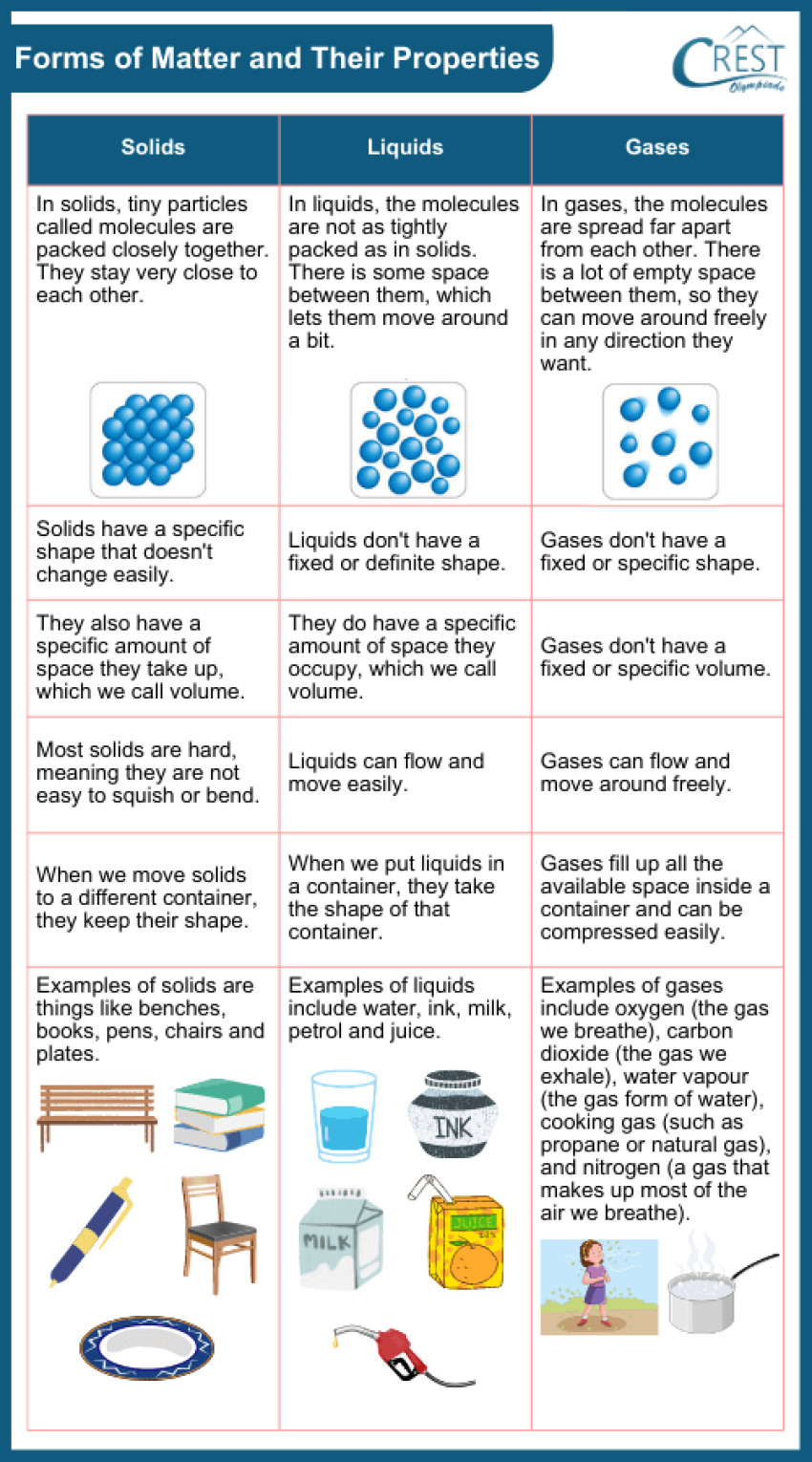
Matter
a) Matter is everywhere around us, and it comes in different sizes, shapes, colours, and other characteristics.
b) However, there are some important things that are common to all objects. One of these is mass, which tells us how heavy or light an object is.
c) Another common feature is space, as all objects take up space.
d) When something has both mass and occupies space, we call it matter.
e) Matter includes both living things and non-living things.
f) It's important to know that matter is made up of tiny particles called molecules, and molecules are made up of even smaller particles called atoms.
g) So, everything around us, whether it's a living thing or not, is made up of these particles.
Forms of Matter and their Properties
Matter can exist in three different forms: solids, liquids, and gases. Each form has its own special qualities and characteristics.
Change of States of Matter
a) Solids, liquids, and gases can change from one form to another.
b) When matter changes from one state to another, it's called a change of state. These changes are physical and can be reversed.
c) They don't involve any changes in the chemical composition of the matter itself.
d) Some common changes of state are melting (solid to liquid), freezing (liquid to solid), condensation (gas to liquid), and evaporation (liquid to gas).
e) To make these changes happen, we can heat or cool the matter. Heating can turn a solid into a liquid or a gas while cooling can turn a gas into a liquid or a solid.
1. Evaporation
a) When we heat a liquid, its molecules start moving more freely.
b) As a result, the liquid can change into a gas or vapour, and we call this evaporation.
c) For example, when the sun is very hot, water from rivers and ponds can evaporate and turn into an invisible gas.
2. Condensation
a) Condensation happens when a gas cools down and turns into a liquid because of a drop in temperature.
b) We can see condensation when water droplets form on the outside of a glass filled with very cold water.
3. Freezing
a) Freezing occurs when a liquid is cooled down, and its molecules come closer together.
b) They arrange themselves tightly and become solid. This process is called freezing. So, when we cool a cup of water, it becomes hard ice.
4. Melting
a) Melting is when a solid turns into a liquid by heating it.
b) For example, when we heat ice cubes, they melt and become water.
5. Materials
a) Materials are like the building blocks of objects, and they have different qualities that make them suitable for different purposes.
b) Some materials are hard, like the metal used in a bicycle, while others are soft, like the fabric used in stuffed animals. You can feel the difference when you touch them.
c) Materials can also look different. Some materials, like glass or plastic, are see-through, which means you can see through them like a window. These are called transparent materials.
d) Others, like wood or metal, are not see-through at all and block light completely. These are opaque materials.
e) There are materials that are in between. They are a little see-through, like when you hold tissue paper up to a light, you can see some light passing through. These are translucent materials.
f) Materials can also feel different. Some are smooth, like the surface of a marble countertop, while others are rough, like the texture of a tree bark. You can run your hand over them and feel the difference.
g) Some materials can keep things dry, like a raincoat that is made of waterproof material. Others, like regular cloth, can get wet easily
h) Materials can also be heavy or light. Some objects made of metal or stone can be heavy, while things made of plastic or foam can be very light.


